Kiteboarding: Onshore Vs Sideshore winds - Versus w/ Rygo Ep13
Last week, we did a video on Light wind vs Strong wind and how currents and tides come into play. Contrary to what I expected, it seemed to be well received. So as I said, I’m going to elaborate further and talk about conditions a little more. I know these conditions videos are a little beginner centric so for any experienced riders who watch this series for gear reviews I’ll get back on track with another gear video next week. That said, you might find some of the points in this video helpful. This week were going to dive a little deeper into wind conditions and talk about Onshore Vs Sideshore winds.
So for anyone out there that is totally new to wind directions let me give you a crash course.
There are 5 different wind directions to consider before you go kiteboarding. Each brings its own benefits and challenges alike. Some are optimal for new kiteboarders, others are reserved for advanced kiteboarders. And some directions are only safe in certain instances but usually downright dangerous.
The five directions are.
- Sideshore
- Side Onshore
- Onshore
- Side Offshore
- Offshore
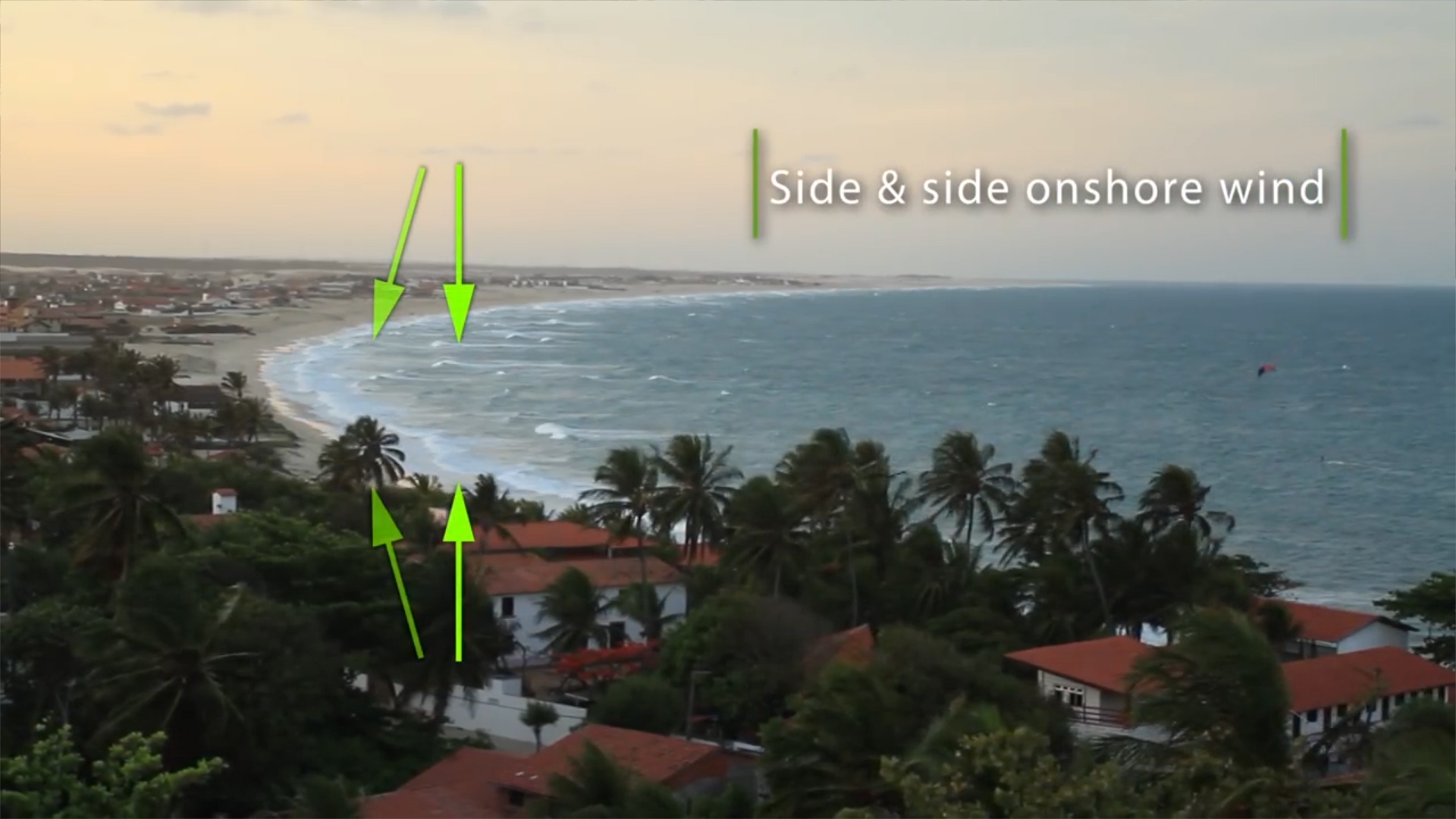
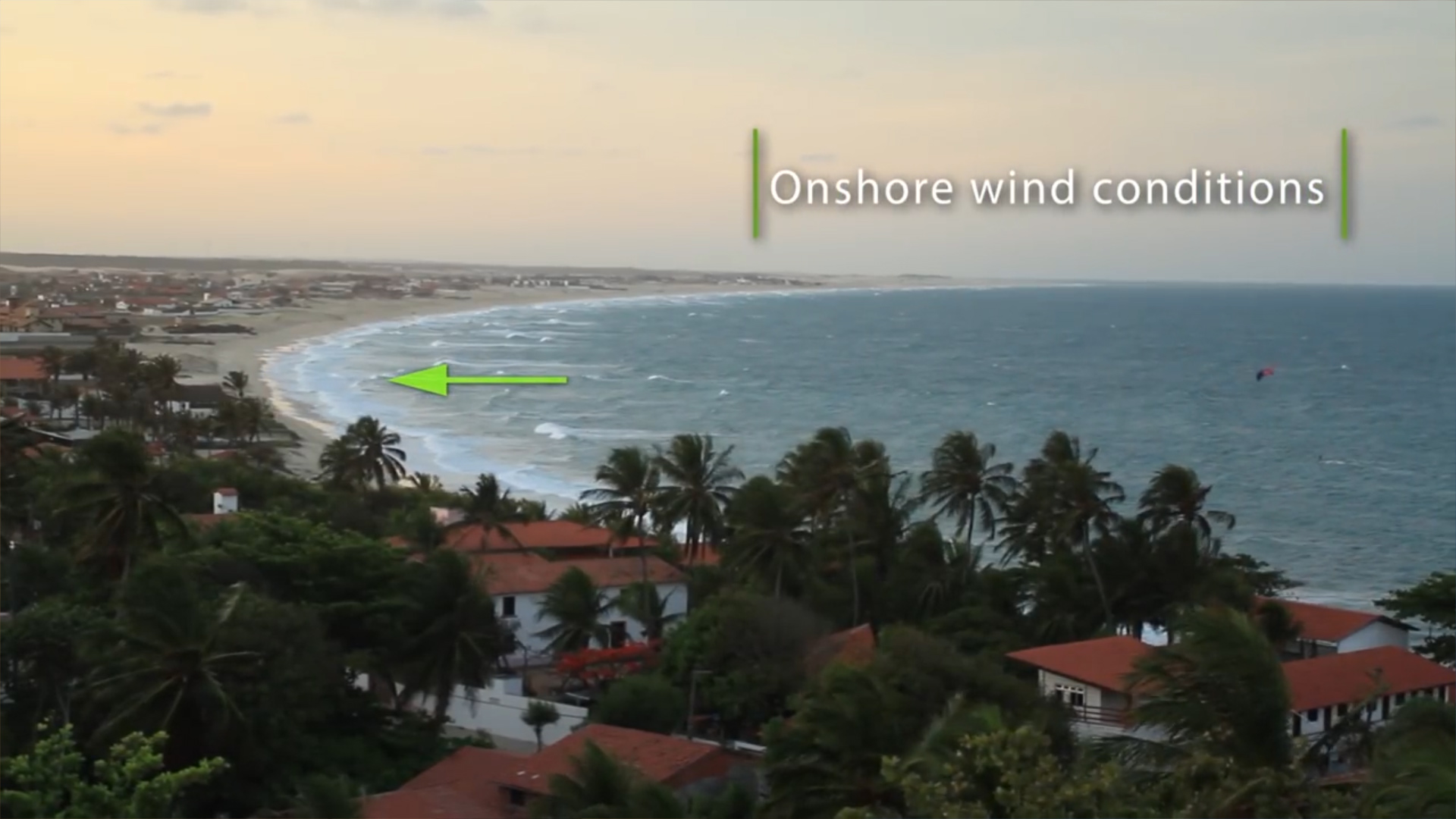
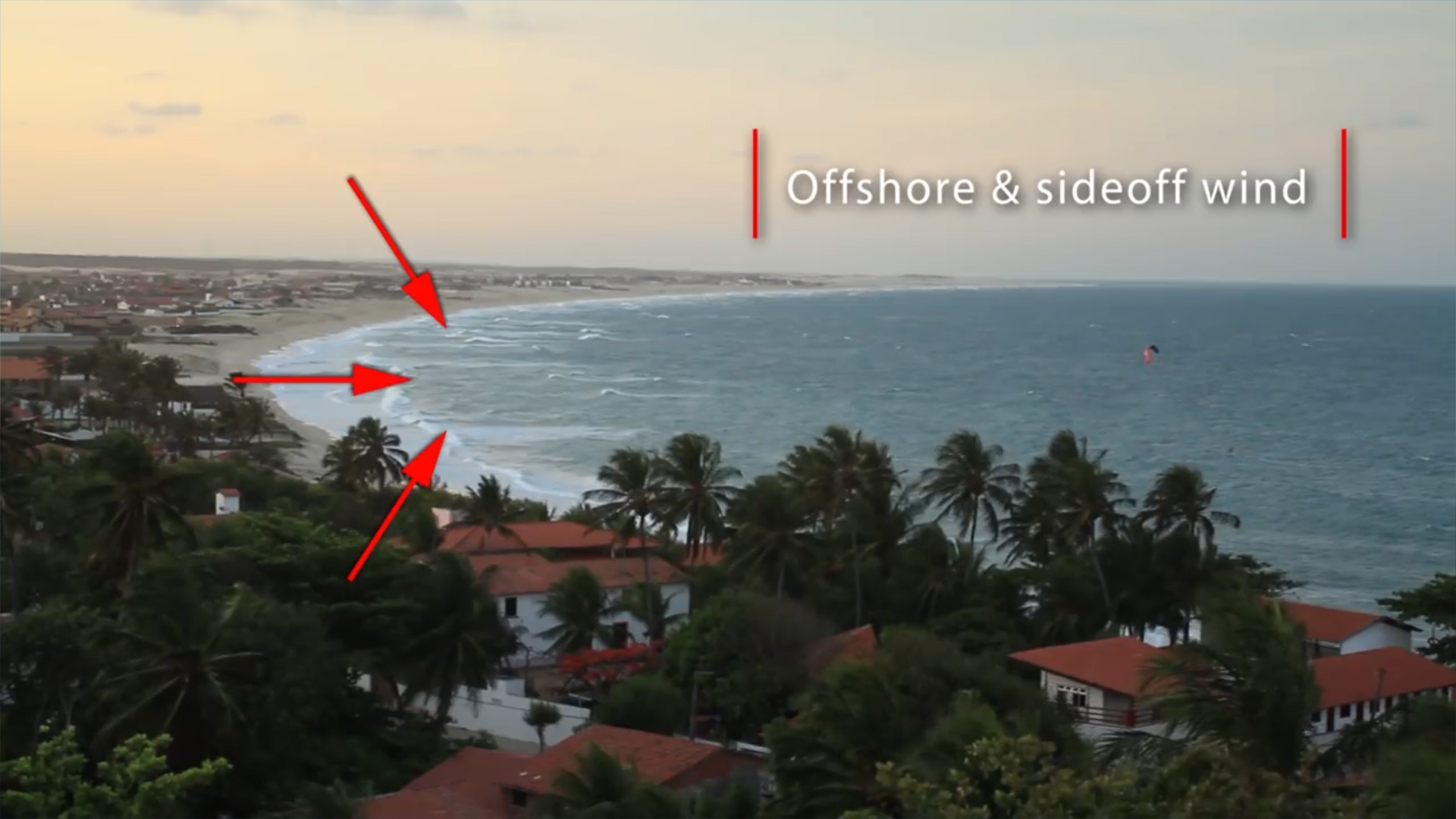
Pay attention to the shape of the coast
Wind directions can change depending on the shape of the coast. For example if you’re riding a sideshore day, near a point where the coast aggressively juts away. Past that point, the wind will be side offshore.
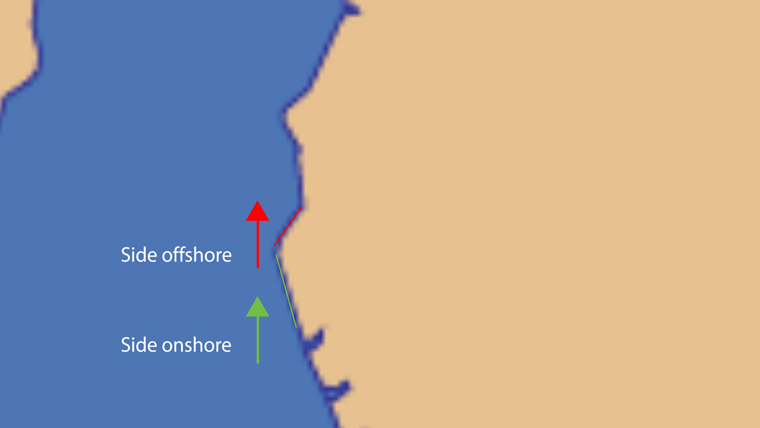
Another scenario would be maybe you’re riding in a bay and as it curves around the wind could go from side shore to onshore as you approach the curve. So just keep in mind, the shoreline in your riding area and how it correlate to the wind direction.
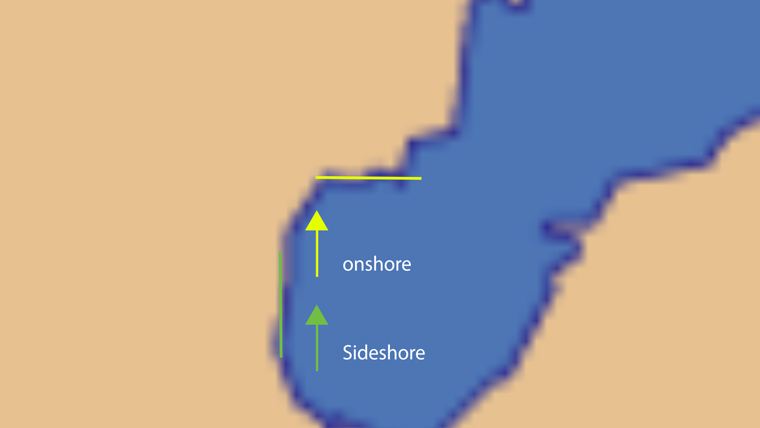
Let's start with Sideshore.
The safest wind directions are sideshore and side onshore. With side onshore being the safest.
Conversely, the most dangerous would be side offshore and offshore with Offshore being the most dangerous. Most riders should avoid this at all cost. Albeit, if you’re in a location with shallow water for miles like Turks and Caicos or if you have a rescue boat it is doable but reserved for the most advanced riders.
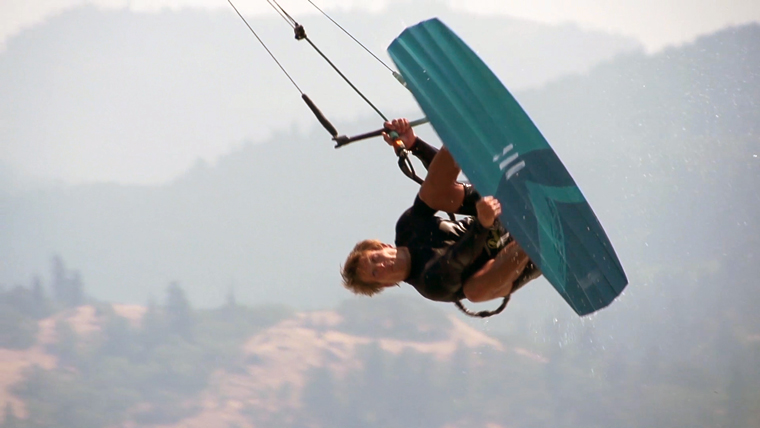
Brandon Scheid throws front indy to blind just off the sandbar in Hood River Oregon.
What about Onshore?
Moving on to Onshore conditions, these are reserved for intermediate riders who can at the very least ride upwind. The reason being is that if you can’t get upwind, well, you’re going to end up with a mouthful of sand or worse when your ride right back into the shore.
So the first thing to consider is what is your level of riding? If you’re new, maybe you just took a kiteboarding lesson or you’ve been riding for a while but you’re not quite getting upwind yet. Stick with sideshore and side onshore winds. If you need help learning to ride upwind, Check out our series Ride with Blake, we have a couple videos on the topic that will get you where you need to be.
Sideshore Wind benefits
So what are the benefit of side and side onshore winds? The first thing to consider is the wind quality. Last week, we talked about gusty winds and how there are variances in the wind speed. The greater the variance the more difficult riding becomes. Sideshore winds are going to yield the smoothest winds as there is a lack of obstacles to create turbulence.
Conversely, offshore winds are going to be incredibly gusty. This is due to the fact that as wind passes over an object be that a tree, a building, whatever. It’s going to roll over the obstacle and this creates an effect called rotary winds. What happens is your kite will be in the sky one moment and falling out of control the next. It can be really frustrating and dangerous depending how gusty the winds gets. You can expect gustier winds for about a distance of 7 times the height of the obstacle the wind is passing over. For example our local pier creates a shadow and when you pass by, its pretty noticeable.
With the lack of obstacle out at sea, Sideshore winds tend to be smoother. It is important to consider the coastline as if the wind is blowing parallel but say further north, the coast angles out to sea, that wind will be passing over the land before it reaches you can therefore can be gustier.
A good example of this is my home spot. On a North wind, the winds are always gusty and inconsistent while a south tends to be smooth and easy. This is due to the shape of our coast.
Something else that is interesting is the temperature. The colder the wind, the more dense it becomes so often, North winds are characterized by strong gusty winds. I could be mistaken on this point so any weather experts out there please feel free to educate us further in the comments.
Are onshore winds smoother?
With all that said on rotary winds, you’re probably thinking onshore winds must be incredibly smooth. After all, they're simply passing over water. And the funny thing is that's not always the case. Rotary winds actually start before the obstacle so while I mentioned after the obstacle, the winds will be gusty for a distance of 7 times the height. However before the obstacle, you can expect rotary winds for I think a distance of 1 times the height of the obstacle. I’m not certain of that number but point being. I often hear people on the beach confused that the wind is gusty near the shore but much better when you get out a few meters. And this is simply due to what is on the shore. Where I live, we have massive sand dunes that line our entire coast so onshore days tend to be gusty near the shore break and smother as you distance yourself from the shore.
Tides & currents
Last week we touched on tides and currents. Depending If the wind is traveling the same direction as the current of the water or against it. The power you experience on the water is going to be affected. Onshore winds tend to be affected by this more so than sideshore winds. Just another reason instructors everywhere advocate that their students start with sideshore winds. All these variable often leaving people frustrated and confused. However, once you understand what is happening, you can adapt and have a lot more fun.
What is the best wind direction?
So just like last week, I’m not going to say any of the safe wind directions are better than the other just make a point to consider your skill level, the shape of your coastline and all the points covered in these last two videos.
Newer riders should stick with the easy side and side onshore winds as there are less variable to deal with and if something goes wrong, you’ll drift back to shore.
Intermediate to advanced riders make a point to get out and ride in all conditions. Just like last weeks video, the more you practice in varying conditions the more well rounded you’ll be.
Onshore winds tend to lend to a different style and require different techniques Especially if you’re riding in the waves. Sideshore vs onshore are two different skill sets. That’s definitely a video for the future. Point being, make the most of what you have, learn how all these variable come into play and have fun! The best advice I can give you is to not take yourself too seriously.
Put the time, realize different conditions require different skills and with practice your skills will improve in all the varying conditions.
 Ryan (Rygo) Goloversic
Ryan (Rygo) Goloversic
Many people dream of quitting their job, traveling the world and pursuing their passions. Rygo is one of those people who pulled the trigger. About eight years into a postal career, he decided to change everything and travel as a freelance videographer & writer. This took him from coast to coast and a variety of countries. Nowadays you can catch him on the phones, doing lessons, or working on videos. Of course, he still makes a point to travel as often as possible. He is passionate about helping people and sharing the stoke with his customers and students alike.
Recent Posts
-
Kiteboarding | Crafting the Harlem Force Kite with Sustainability and Performance
Unparalleled Performance Meets Unmatched Sustainability The kiteboarding industry is on …24th Apr 2024 -
Duotone Ventis 2025 | What's New?
If you're familiar with Duotone's Ventis, you know its specialty is freeriding in light wind …23rd Apr 2024 -
Duotone Ventis D/LAB 2025 Overview
If you ride in an area with multiple light wind days and need a wing that'll let you get o …23rd Apr 2024




